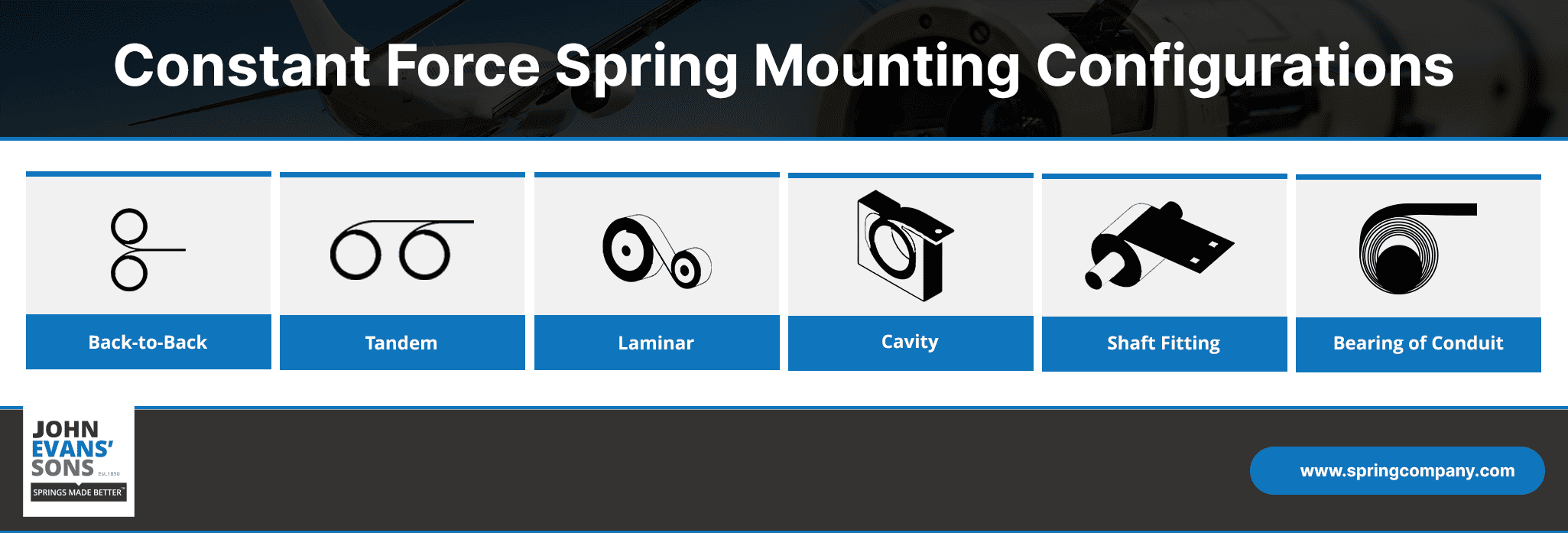When you think of a spring, what first comes to mind is probably a helically wound spring consisting of a coiled wire of a given diameter. Constant force springs look a little different in that they typically consist of flat metal strips that have been pre-tensioned.
Manufacturers can coil constant force springs with the same equipment as helix springs with just a few small changes to the machinery. Once the strip material, initial load, and inside and outside diameters are determined, the mounting method should also be considered.
What is Mounting?
Mounting is where and how the spring will be placed to perform its designated function. At first glance, a constant force spring looks like it is made to naturally fit on a spool. While it can certainly rest around a spool, that is not always required for this type of spring to do its job. Where and how you choose to mount the spring ultimately depends on the application or device and what you need the spring to do in the design.
There are a lot of considerations when selecting a method for mounting in order to get the most use out of a spring. The design should take into account how far the spring needs to extend and how to keep it from twisting or kinking. Some mounts work better for tighter spaces while different ones are necessary for longer extension requirements.
It is important to select the correct method based on the type of load that you need the spring to handle. Failure to consider mounting methods in the design process could have implications on your project cost and lead time.
Learn about other design considerations for constant force springs.
What are the Different Mounting Methods?
There are a variety of mounting methods to consider, but some of the most typical options for a constant force spring include back-to-back, tandem, laminar, and cavity.

Back-to-Back Mounting
This is one of the more stable mounting options where two springs are mounted back-to-back and unwind in opposing directions. This is a desirable configuration for applications requiring long extensions as it prevents twisting.
Tandem
This method involves placing one spring behind the other with some space between; however, it does not offer as much stability as other methods. This option may be a better choice when there is not enough room in the design for a back-to-back mounting.
Laminar
This method is a good option if you’re working within a limited space. It involves interwinding multiple springs together and takes up slightly more space than a single spring. For more force from shorter extensions, laminar may be the way to go.
Cavity
This method is the easiest to assemble because it does not require a bushing, but it also encounters the most friction during operation. The spring itself is mounted in a cavity, which then increases friction from the constant contact during movement unless additional considerations are implemented during the design process.
Mounting multiple springs together tends to provide greater force since the total force is equal to the sum of the springs.
Which Mounting Method is Right for Your Application?
Because constant force springs are used in many different ways, there is no single mounting method that will be ideal for every application.
If you are unsure which mounting method is right for your device, John Evans’ Sons can assist you. Our design engineers can explain different mounting methods and other technical considerations to ensure you get the constant force spring that you need.